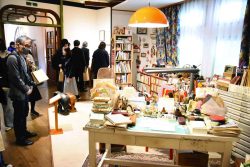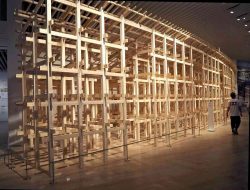Imperial Artistic Patronage Through the Ages at Tokyo Museum; Works of Legendary Calligraphers, Modern Artists
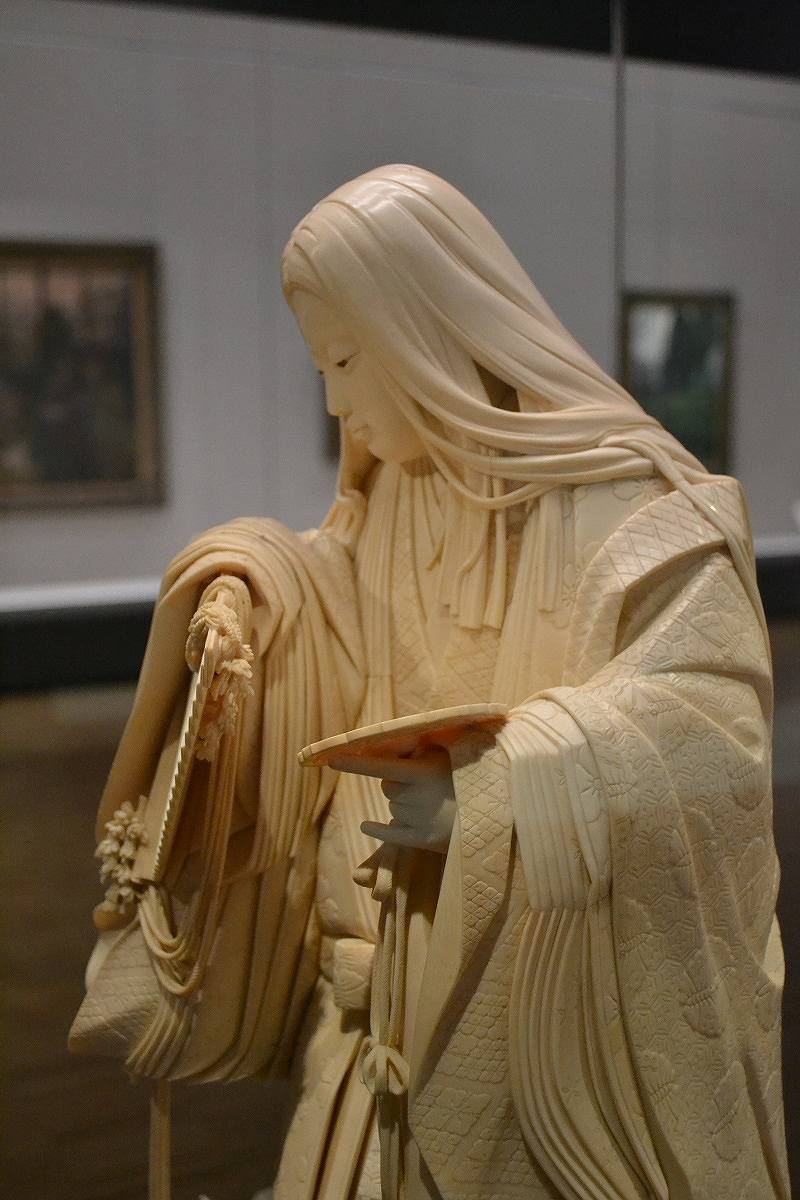
The “Court Lady”carved ivory statue holds a mirror in her left hand as her hair cascades down her shoulders.
7:00 JST, November 10, 2024
Stunning brush strokes, both in calligraphy and paintings, are on display alongside beautiful decorative art pieces at The Museum of the Imperial Collections, Sannomaru Shozokan in Chiyoda Ward, Tokyo.
The exhibitions are separated into two rooms, “Court Calligraphy” and “Imperial Patronage of the Arts.”
The calligraphy exhibition features scrolls, letters and books ranging from the 10th to the 17th centuries and includes the writings of famous courtiers like Ki no Tsurayuki.
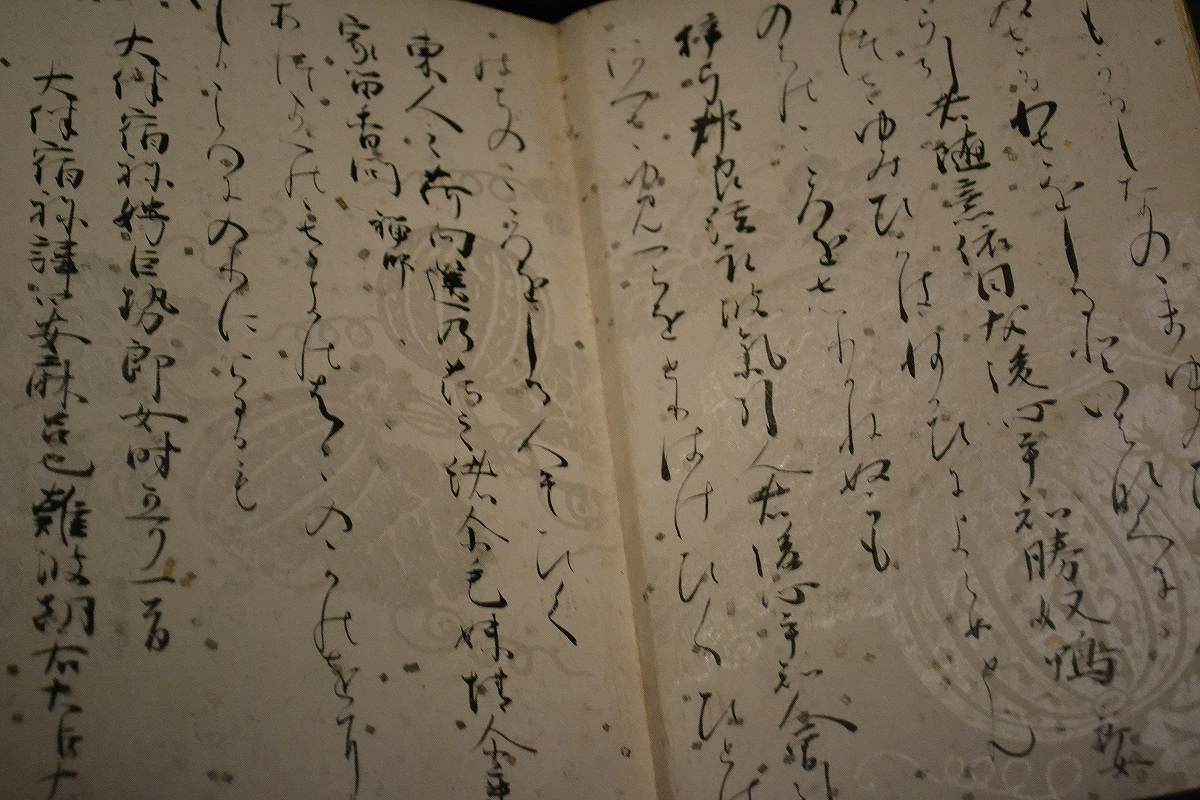
The “Collection of Myriad Leaves” (Kanazawa Version) demonstrates how even the paper used for calligraphy became an art form.
Among these is the “Collection of Myriad Leaves” (Kanazawa Version), a poetry anthology written on beautifully decorated paper with mica-printed plant backgrounds.
Hiroyuki Shimatani, the executive director of the museum, gave a brief explanation of the exhibition on the opening day:
“Calligraphy is created to be a collaboration between three things: artful writing, artistic paper and literature, so we would be happy if people can find things that match their personal interests in these writings.”
Another work where the paper is as beautiful as the calligraphy is “Moon at Dawn,” a collection of poem slips from monthly court poetry contests, with blue and purple cloud patterns to accompany the writing.
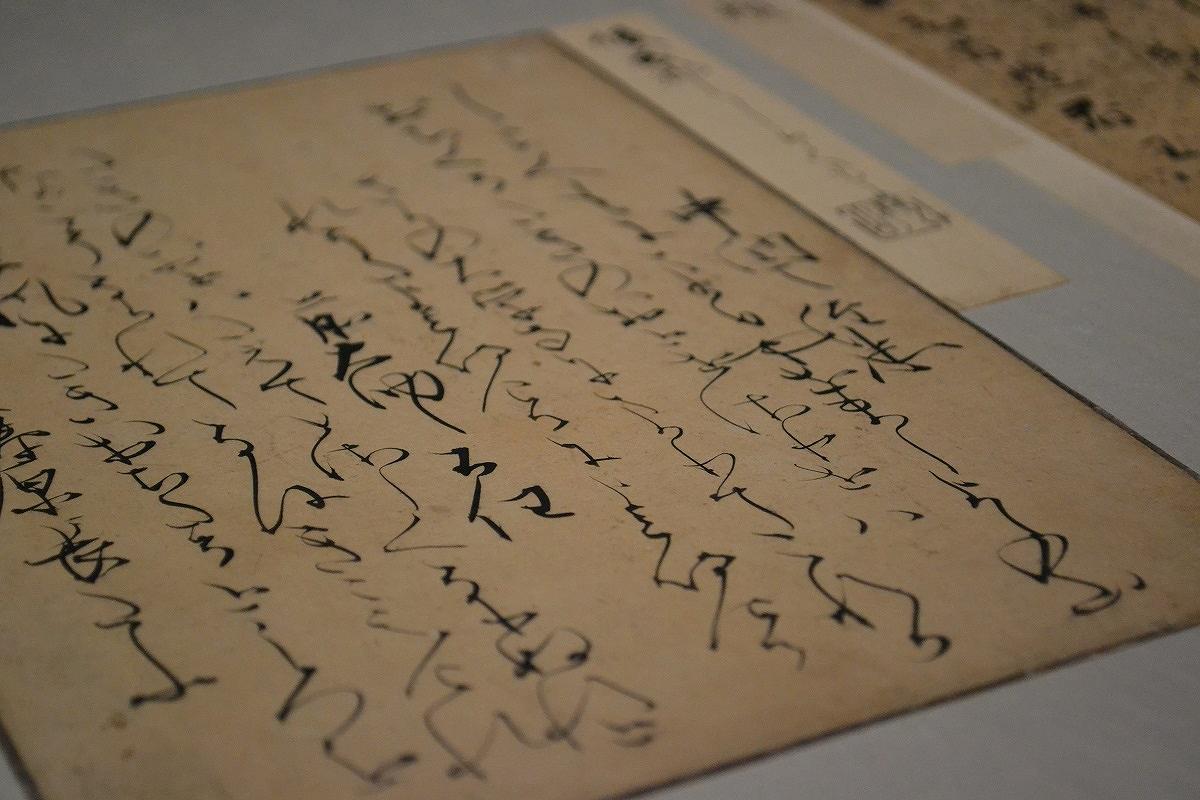
The “Album of Exemplary Calligraphy” shows off how creative Japanese cursive writing can be.
For anyone who struggles with the cursive writing styles on display or is unable to read Manyogana, which uses kanji as phonetic symbols, some exhibits come with transcriptions in printed text, including Romanized versions, and English translations.
The Imperial patronage exhibition shows works from the late 19th to the mid-20th centuries and includes paintings, sculptures, and other decorative art forms.
Shimatani stressed that these were not given as gifts to the Imperial household, but they were instead purchased based on interest in the works and to support the artists.
Both the nihonga paintings and oil paintings often focus on nature or traditional Japanese scenery.
“A Fine Autumn Day,” for example, is an oil painting of deer strolling through an abandoned property under vibrant leaves.
One can almost hear the thrushes playfully flitting between trees in “Autumn Valley,” a six-paneled folding screen.
There are ivory, bronze and wood sculptures made in impressive detail.
“Court Lady,” made in 1901, shows a woman in a junihitoe, a complicated form of Heian period dress. The details, from the flowers in her sleeve to the strands of hair, demonstrate why it took years to complete, with the artist researching the clothing to ensure everything was period accurate.
There will be rotations of the exhibitions, with different paintings or pages of the poetry collections being shown at different times.
The exhibitions run until Dec. 22.
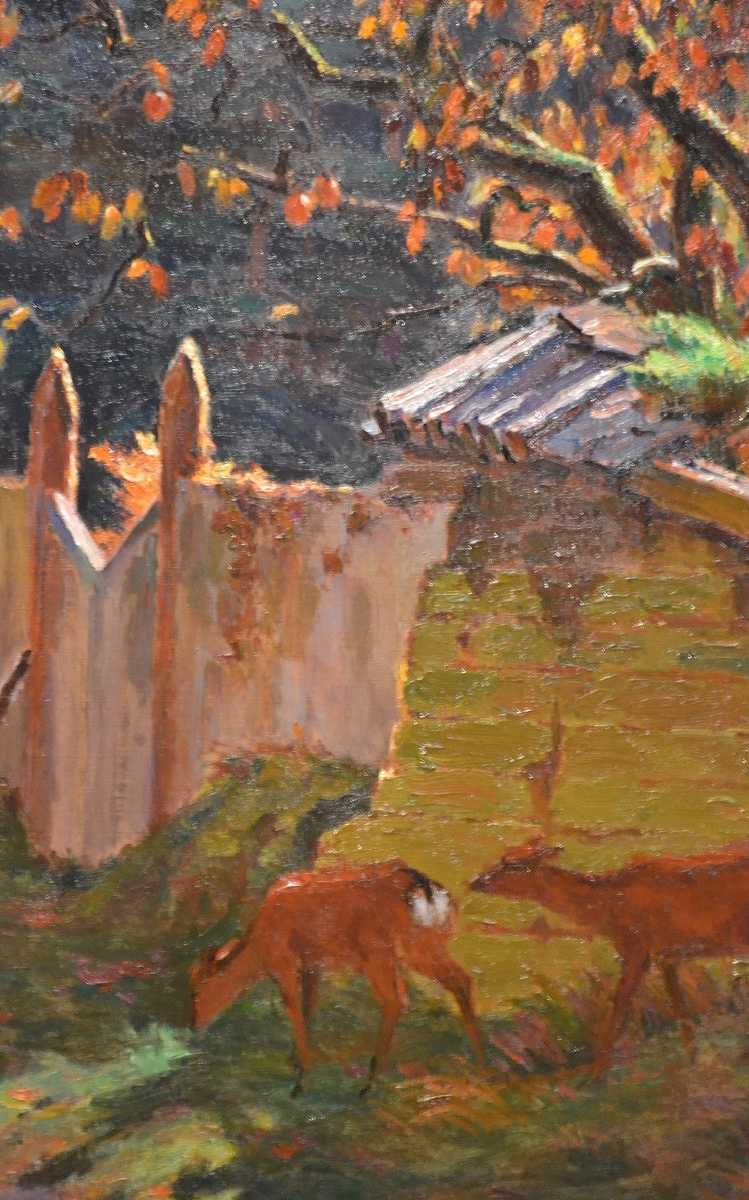

Left: Deer take a stroll through an abandoned property in “A Fine Autumn Day.” Right: Birds fly above the mistshrouded trees in “Autumn Mountains in the Early Evening.”
"Culture" POPULAR ARTICLE
-

Van Cleef & Arpels Dazzles with Art Deco Artisanry at Tokyo Exhibit
-

Disney’s ‘Twisted-Wonderland’ Animated Series Puts Villains in Spotlight: New Show Features School Inspired by Classic Disney Films
-

Japan Plans to Distribute Manga Overseas Via New Platform
-

Japanese Craftsman Produces Beautiful and Durable Bags Made of Wood
-

Ayumi Hamasaki’s Shanghai Concert Canceled Day Before Schedule as Part of Beijing Backlash
JN ACCESS RANKING
-

Keidanren Chairman Yoshinobu Tsutsui Visits Kashiwazaki-Kariwa Nuclear Power Plant; Inspects New Emergency Safety System
-

Imports of Rare Earths from China Facing Delays, May Be Caused by Deterioration of Japan-China Relations
-

University of Tokyo Professor Discusses Japanese Economic Security in Interview Ahead of Forum
-

Japan Pulls out of Vietnam Nuclear Project, Complicating Hanoi’s Power Plans
-

Govt Aims to Expand NISA Program Lineup, Abolish Age Restriction



